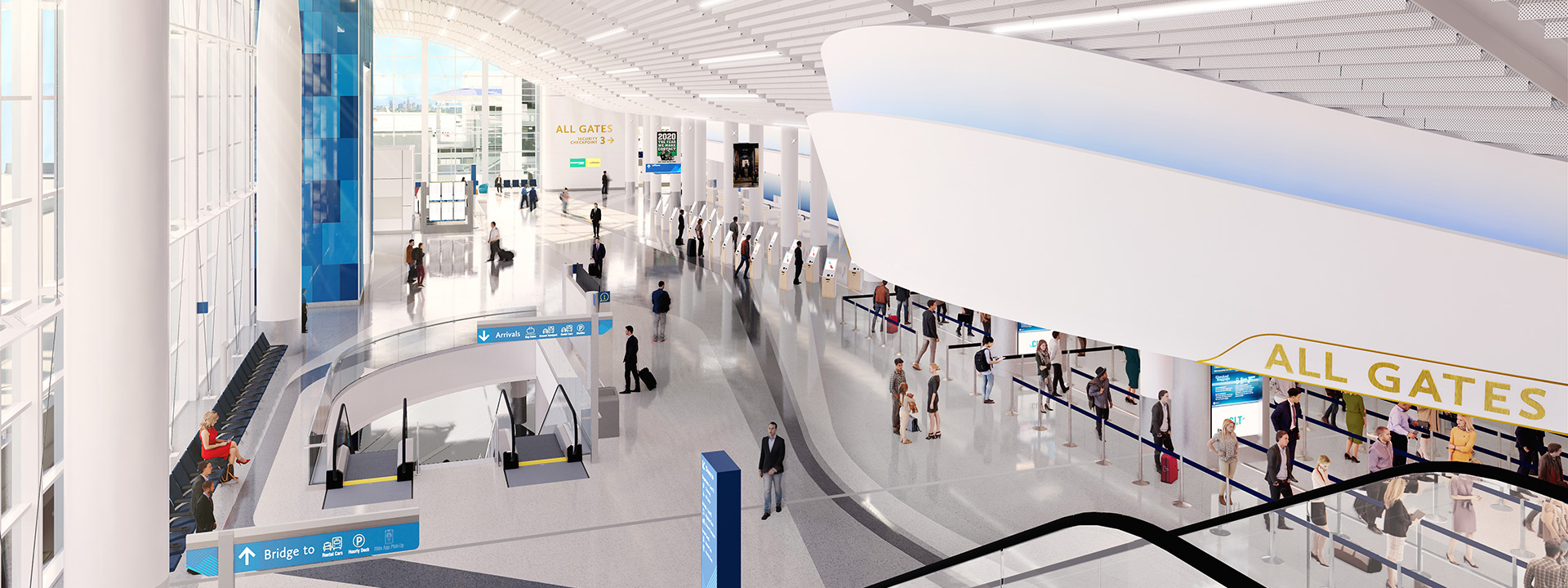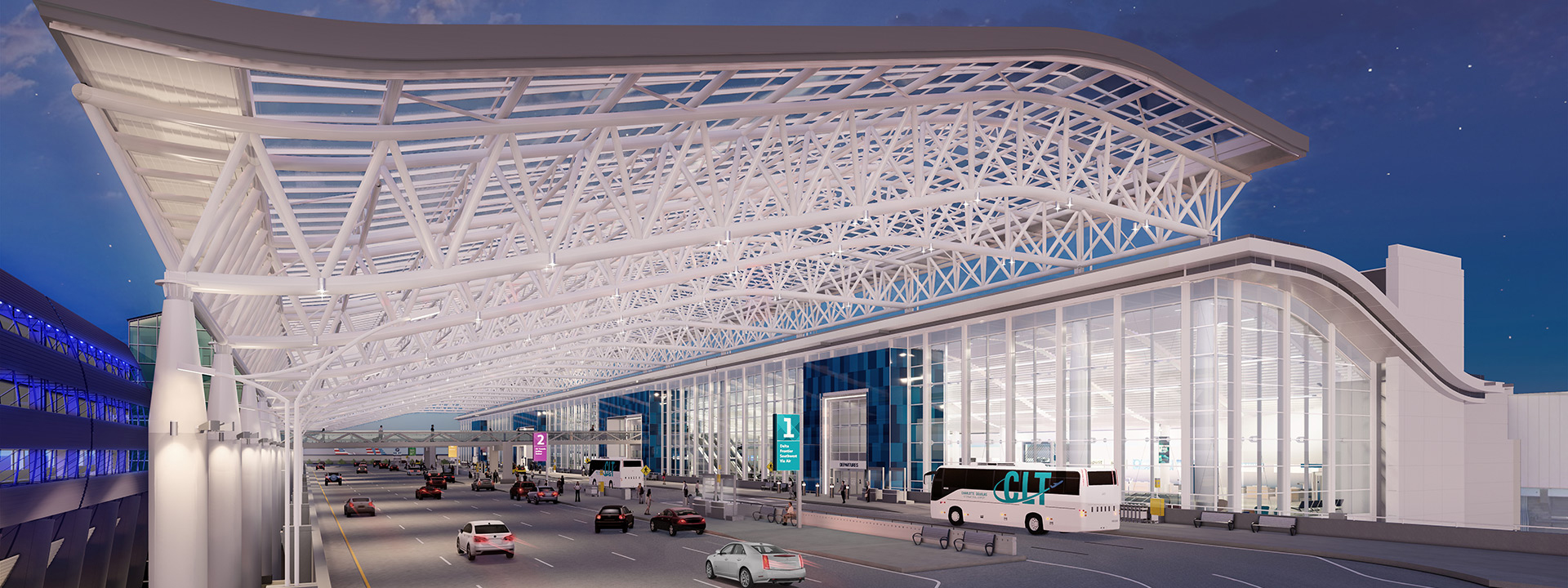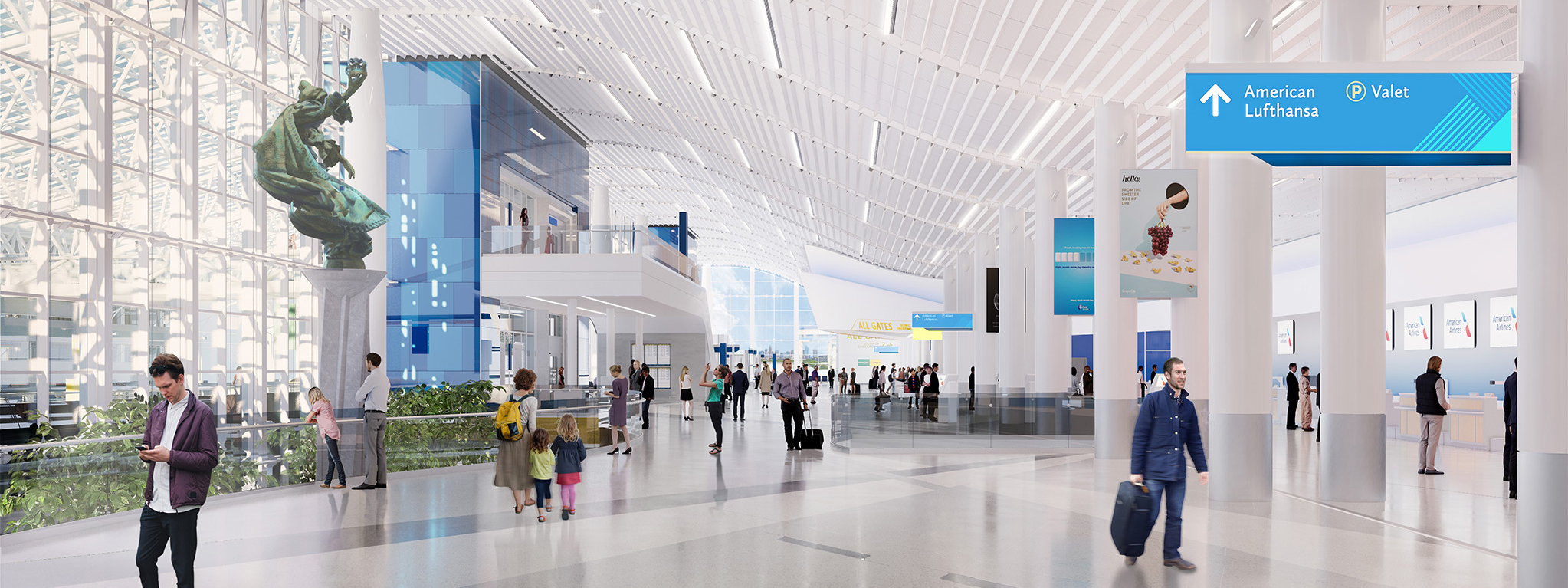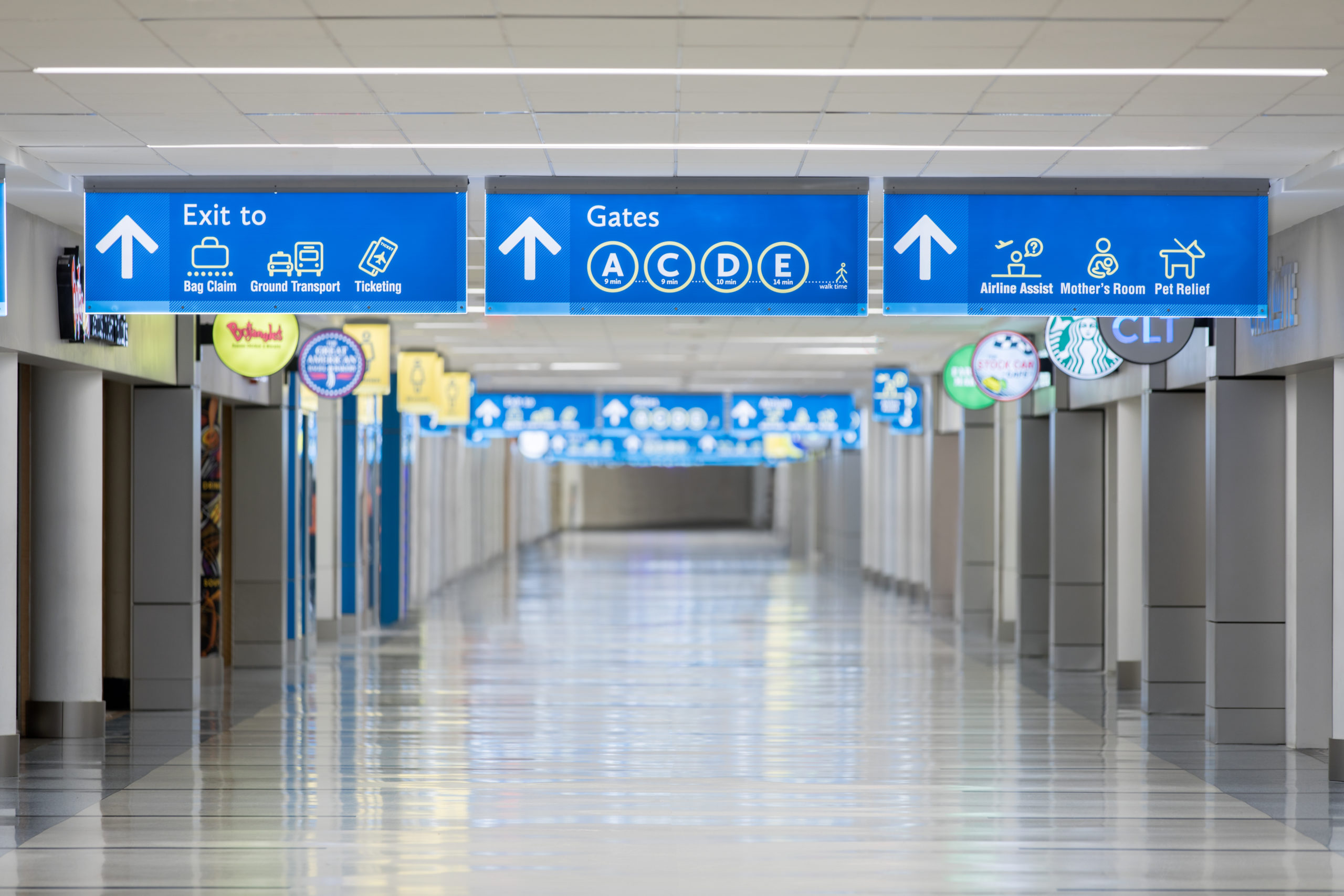
Keeping carriers and customers happy during CLT’s historic expansion
How Charlotte is delivering a multibillion-dollar capital improvement program with support from all sides
By Jack Christine, Chief Operating Officer | Charlotte Douglas International Airport
Charlotte Douglas International Airport has seen unprecedented demand for air travel in recent years. Aided by the region’s population growth and American Airlines’ strategic initiative to increase its presence here, our passenger totals rose to all-time high of 50.2 million in 2019, ranking us among the world’s top 10 busiest airports.
Like the rest of the industry, our airport felt significant impacts from COVID-19. However, despite traffic dropping 46% in 2020, our partner airlines continued to add Charlotte-based flights as they rebuilt their schedules, with a total of 10 new destinations now available to flyers. As the aviation industry recovers and understanding that demand will continue to grow, we have continued to move forward with Destination CLT to help meet the needs of our customers and airline partners. Launched in 2015, the 10-year program is the most significant expansion in the history of our airport, with an estimated cost between $2.5 - $3.1 billion. Landside projects include an elevated roadway and terminal curb front, expansions to Concourses A, B, C and E, a terminal food court expansion, terminal renovations and lobby expansion.
Modernizing our airport, while effectively serving passengers is challenging – but not as challenging as it might have been had we not approached it with a spirit of collaboration. Passengers and air carriers would be living through the decade-long renovation with us. We believed inclusivity was the only way to proceed. Since the program’s inception, we have listened, identified and proactively responded to their top concerns:
- • Carriers enjoy a low cost per enplanement (CPE) at CLT. They wanted us to keep it low.
- • Ten years is a long time to inconvenience carriers and customers. Schedules needed to be accelerated when and where possible.
- • Passengers and carriers wanted us to include them in the program by way of involvement, information or both.
Below is how we are addressing each of those concerns:
CPE: Sustaining a competitive operation
As a department of the City of Charlotte, CLT is a public enterprise; however, we are entirely self-sustaining and do not collect tax dollars. You might expect us to have a high cost per enplanement to compensate, but at $2 our CPE is the lowest airline cost per passenger among all large-hub airports in the U.S.
We cannot deliver a modernized airport and keep our CPE below $2, but we can remain aggressively competitive. Rather than focus on a specific dollar amount, our approach is to benchmark our airport against other large-hub airports to ensure we continue to be among the lowest-cost facilities in the country. Because of the tremendous infrastructure growth anticipated by many airports, including CLT, over the next 7-10 years, comparing our CPE against the CPE of other key airports will be a better indicator of carrier cost vs. value.
Time: Accelerating the schedule
After Destination CLT launched, we incrementally added speed and complexity to our workloads. Our in-house staff absorbed the additional projects to a point, but we knew we would reach saturation and need outside resources.
To help us identify the areas in which we would need additional support, we developed a resource allocation plan. As a result, we hired project managers, project inspectors and project controls specialists. Their primary responsibility is coordinating the various interrelated, overlapping projects, identifying potential clashes and avoiding overly cumbersome impacts.
Having additional program management expertise immersed in the program is critical to maintaining:
- • An aggressive schedule and our pledge to reach completion by 2025
- • Communication between the airport and the contractors.
- • Claim-free projects
Although outside expertise is an additional expense, the dividends of fewer claims and schedule compliance alone are worth it. We are continuing to track well on schedule and budget for the Destination CLT program.
Inclusion: Collaborating and communicating in excess
We use the phrase “excessive collaboration and communication” purely in an attempt to describe our team’s all-out effort to engage carriers and customers in a very genuine and meaningful way. Throughout the program, we have proactively communicated with our stakeholders, treating them as partners in the program’s development.
For customers, our relationships with the local news media and a constant newsfeed on social media have proven to be valuable communication tools as we work through the development program. As an example, the Concourse B renovation project was challenging because it is our busiest concourse, and the renovations had to be done while we continued to use every gate on the concourse. Seeing us dismantle the ceiling and prepare the floor for terrazzo tile installation was jarring and somewhat disorienting for our customers. We kept them informed and engaged by actively participating in social media, posting explanations and renderings and quickly responding to questions. Our responses were helpful not only to the individual posting a comment, issue or request but to everyone who follows us on that platform. Understanding something new and better was coming helped customers endure the floor-to-ceiling concourse transformation with patience. They have welcomed the completed renovation with excitement and positive feedback.
In 2020, we moved forward to also complete successful renovations to Concourses A and C. Throughout that process, we were able to respond to questions from passengers on social media with pictures of the already finished renovations on Concourse B to help them better understand the project and visualize the end product.
Our policy not to move forward with any initiatives unless we have a consensus among our carrier partners can threaten an aggressive schedule. Nonetheless, it’s how we choose to do business. To ensure each project provides what the carrier needs to operate efficiently, we invest a tremendous amount of time and effort to understand their expectations and explain what those expectations mean in terms of cost and operational impacts.
During the planning phase of each project, we hold regularly scheduled meetings with carrier representatives. We walk through the project, discuss how to manage the operation and transition to the new asset. Soliciting carriers’ ideas and feedback each step of the way builds trust and results in a better product.
Once we implement a project, we meet with the carrier representatives regularly, and we invite their representatives to our construction meetings. We don’t always see eye to eye, but our inclusive approach gives us the time and ability to achieve alignment on each project. Carriers appreciate our approach. Several have called it “refreshing and effective.”
That’s the outcome we envisioned when we began Destination CLT. Planning and executing a significant improvement and renovation program is taxing on everyone, but if airports give the proper attention to stakeholders’ concerns, they can strengthen and deepen their relationships with carriers and customers.
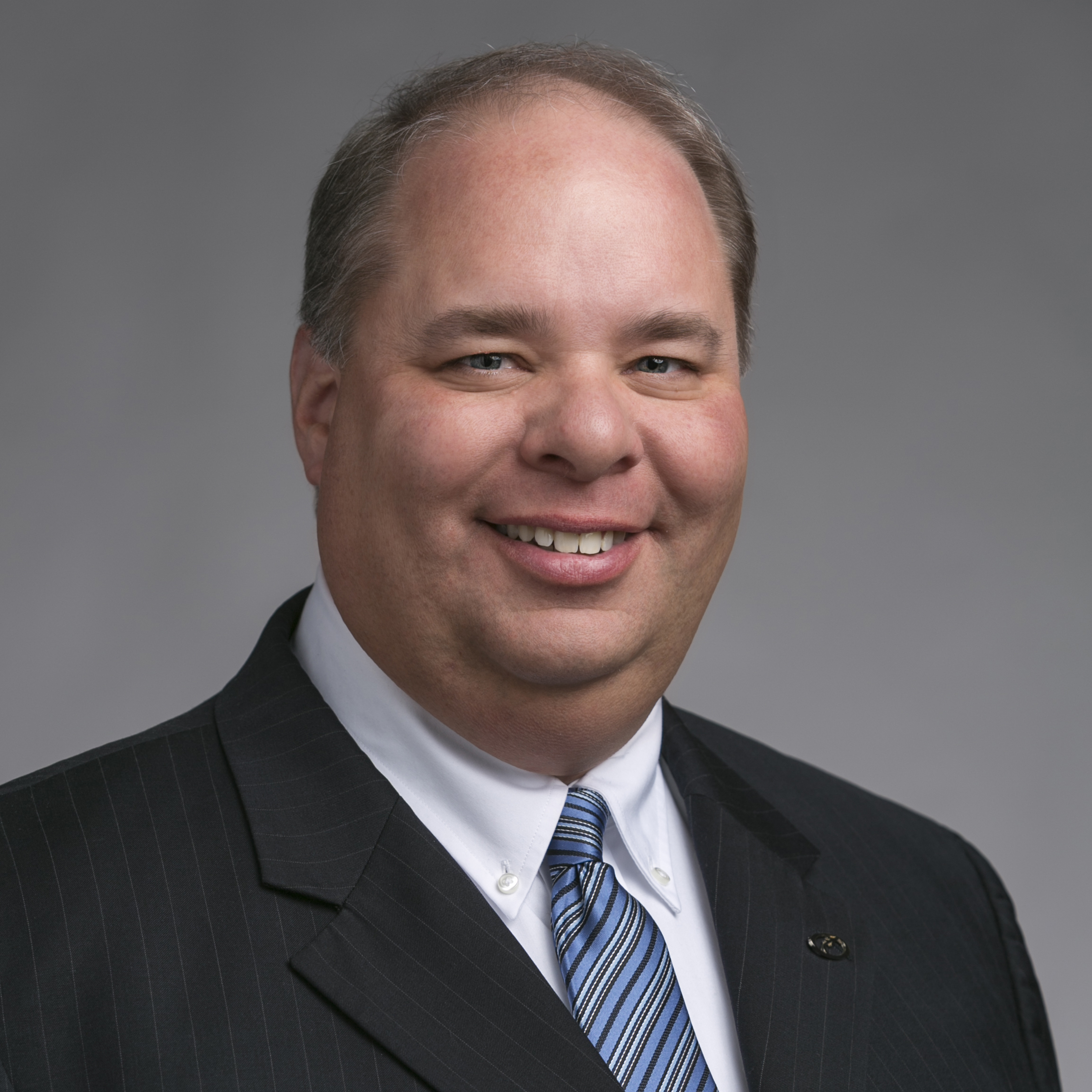
ABOUT THE AUTHOR
Jack Christine is responsible for airport development, operations and facilities maintenance. During his 23-year career at the airport, Christine has been the assistant aviation director of development, planning and development manager, airport planner and associate airport planner. In addition to his position as COO for the airport, Mr. Christine also serves as an adjunct professor at the University of North Carolina at Charlotte, teaching courses in airport development. Contact him at (704) 359-4932 or jlchristine@cltairport.com.

